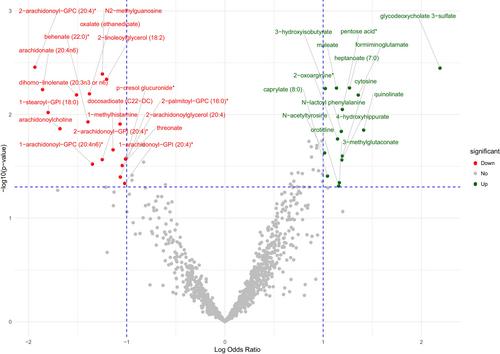Circulating metabolite levels are altered in multiple sclerosis (MS) and are associated with MS severity. However, how metabolic profiles shift following highly efficacious therapies, like ocrelizumab remains unclear.
Circulating metabolite levels are altered in multiple sclerosis (MS) and are associated with MS severity. However, how metabolic profiles shift following highly efficacious therapies, like ocrelizumab remains unclear. To assess changes in the circulating metabolome produced by ocrelizumab treatment in people with relapsing–remitting MS (RRMS).
Thirty-one individuals with RRMS eligible for beginning treatment with ocrelizumab were recruited and followed with demographic, clinical, quality-of-life, and global metabolomics data collected at each visit. Modules of highly correlated metabolites were identified using the weighted correlation network analysis approach. Changes in each module's eigenmetabolite values and individual metabolites during the study were evaluated using linear mixed-effects models.
Patients with a mean age of 40.8 (SD = 10.30) years, and median disease duration of 4.0 (IQR = 8.5) years, were monitored for a median of 3.36 (IQR = 1.43) years. Two out of twelve identified sets of metabolites were altered significantly. The first module mainly contained androgenic and pregnenolone steroids (p-value <0.001, coefficient: −0.10). The second module primarily consisted of several lysophospholipids, arachidonic acid, some endocannabinoids, and monohydroxy fatty acid metabolites (p-value = 0.016, coefficient: −0.12), which its reduction was significantly associated with improvement based on overall disability response score (OR 3.09e-01, 95% CI: 6.83e-02, 9.09e-01, p-value = 3.15E-02).
In this longitudinal observational study, using a global untargeted metabolomics approach, we showed significant alteration in circulating metabolome in RRMS patients undergoing ocrelizumab treatment. In particular, we observed a significant reduction in metabolites involved in the lysophospholipid pathway, which was associated with patients' improvement.



